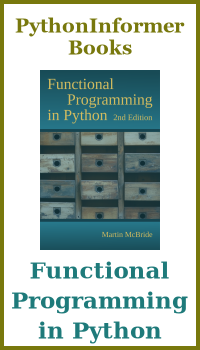Using numpy with Matplotlib
Categories: matplotlib numpy

The previous article showed how to create a plot using Python lists to store the data. Matplotlib also works with NumPy, and this can often simplify things.
Here we will look at how to use numpy to create the x values and y values more easily.
Creating the x values
We want to create a set of 100 x values, equally spaced over the range 0 to 12. We can do this using Python lists by scaling the loop variable.
However, numpy has a function linspace that is designed to do this job. It has two advantages:
- it is more readable
- it covers the exact range 0 to 12, with the intermediate values equally spaced
If you recall, our previous code went from 0 to almost 12, which wasn't really much of a problem, but it wasn't quite correct.
Here is how we use linspace to create our range:
xa = np.linspace(0, 12, 100)
Creating the y values
NumPy supports universal functions. These allow you to operate on entire arrays in one go:
ya = np.sin(xa)*np.exp(-xa/4)
This performs the same calculation on each of the 100 elements of xa, creating a new 100-element array ya containing the results. This avoids a loop, which makes the code more readable, but also more efficient.
Complete code
Here is the complete code:
from matplotlib import pyplot as plt
import numpy as np
xa = np.linspace(0, 12, 100)
ya = np.sin(xa)*np.exp(-xa/4)
plt.plot(xa, ya)
plt.show()
This code is shorter and more readable, as well as being more efficient. This becomes more important with large data sets, and especially 2-dimensional data.
Here is the output:

This image is almost exactly the same as before. There is a very tiny change in scale because (as we noted before) this graph has values 0 to 12 whereas the previous graph has values 0 to almost 12. The difference is only visible if you compare the graphs pixel for pixel.
Matplotlib for data science
NumPy is a key component used in data science applications, along with Pandas and SciPy. Matplotlib works well with these libraries, making it a very useful library for data science visualisation.
The code for this section is available on github as numpy-function.py.
Related articles
Join the GraphicMaths/PythonInformer Newsletter
Sign up using this form to receive an email when new content is added to the graphpicmaths or pythoninformer websites:

Popular tags
2d arrays abstract data type and angle animation arc array arrays bar chart bar style behavioural pattern bezier curve built-in function callable object chain circle classes close closure cmyk colour combinations comparison operator context context manager conversion count creational pattern data science data types decorator design pattern device space dictionary drawing duck typing efficiency ellipse else encryption enumerate fill filter for loop formula function function composition function plot functools game development generativepy tutorial generator geometry gif global variable greyscale higher order function hsl html image image processing imagesurface immutable object in operator index inner function input installing integer iter iterable iterator itertools join l system lambda function latex len lerp line line plot line style linear gradient linspace list list comprehension logical operator lru_cache magic method mandelbrot mandelbrot set map marker style matplotlib monad mutability named parameter numeric python numpy object open operator optimisation optional parameter or pandas path pattern permutations pie chart pil pillow polygon pong positional parameter print product programming paradigms programming techniques pure function python standard library range recipes rectangle recursion regular polygon repeat rgb rotation roundrect scaling scatter plot scipy sector segment sequence setup shape singleton slicing sound spirograph sprite square str stream string stroke structural pattern symmetric encryption template tex text tinkerbell fractal transform translation transparency triangle truthy value tuple turtle unpacking user space vectorisation webserver website while loop zip zip_longest
